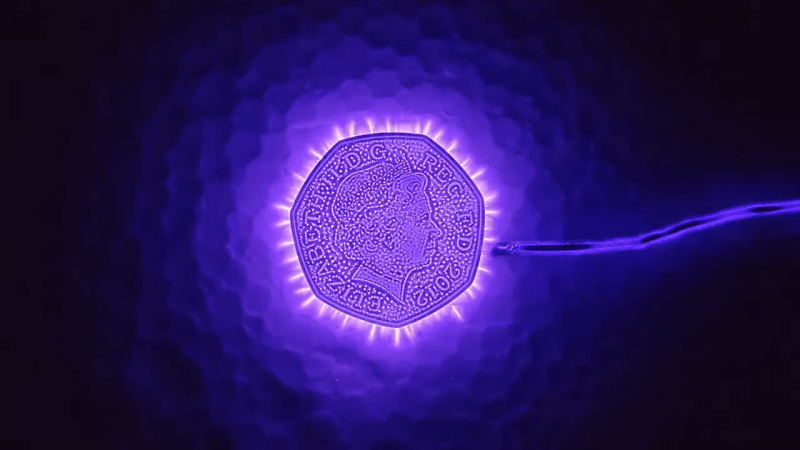In our age of pervasive digital media, “pics or it didn’t happen” is a common enough cry that most of us will gladly snap a picture of pretty near anything to post online. So if you’re going to take a picture, it may as well be as stunning as these corona discharge photographs made with a homebrew Kirlian photography rig.
We know, Kirlian photography has a whole “woo-woo” vibe to it, associated as it has been with paranormal investigations and the like. But [Hyperspace Pirate] isn’t flogging any of that; in fact, he seems way more interested in the electronics of the setup than anything else. The idea with Kirlian photography is basically to capacitively couple a high-voltage charge across a dielectric, which induces an electrostatic discharge to a grounded object. The result is a beautiful purple discharge, thanks to atmospheric nitrogen, that outlines the object being photographed.
[Pirate]’s first attempt at a Kirlian rig used acrylic as a dielectric, which proved to be susceptible to melting. We found this surprising since we’ve seen [Jay Bowles] successfully use acrylic for his Kirlian setup. Version 2 used glass as a dielectric — right up until he tried to drill a fill port into the glass. (Important safety tip: don’t try to drill holes in tempered glass.) Version 3 used regular glass and a 3D-printed frame to make the Kirlian chamber; filled with saltwater and charged up with a homebrew Tesla coil, the corona discharge proved enough to char fingertips and ignite paper. It also gave some beautiful results, which can be seen starting at around the 7:40 mark in the video below.
We loved the photos, of course, but also appreciated the insights into the effects of inductance on the performance of this setup. And that first homebrew flyback transformer [Hyperspace Pirate] built was pretty cool, too.
Thanks for the tip, [zit]!
[via DIYPhotography]
















That was SUPER cool. Oh by the way I have a copy of the key to your house now! Thanks!
Awesome! Thanks for sharing
I dig the natural “dithering” effect on the coins…
Yeah, that’s superb.
Physics is rad.
Excuse me, but how is this not lethal?
Low enough current
Keep the frequency high enough and skin effect means the charge travels along the outside of your skin rather than through your body.
I was going to complain that was not a British £, but a 50p. On the other hand the $ is now worth about 50p, so fair enough
the $ is now worth about 50p
I don’t know what dollar you are referring to, but if the USD, your statement has not been true since 2007.
The UKP is rapidly approaching par with the USD, thanks to the new PM’s recent oopsie.
Nice to see at least a cursory write-up on the youtube page, but it’s too bad the video format is so inaccessible to many. I really wanted to learn more about this project.
Bringing back memories of my child hood some 25 years ago. In the bathroom with towels stuffed under the door, plate made from the lid of a tin can, some overhead projector sheets, a high voltage “buzz box”, colour 35mm film and
my finger. https://www.flickr.com/photos/flyinglow/52425310098
I could reliably produce the “Phantom Leaf” effect. The trick was to squash a fresh leaf between the plates, then carefully cut off half, without moving the other half. The removed half will leave a thin layer of moisture that conducts the electricity, and produces the phantom half.
Also, you can use Kirlian Photography to produce “X-rays” of electronics inside of plastic enclosures, showing the PC boards and metallic objects. Of course, the electronics are toast afterwards.